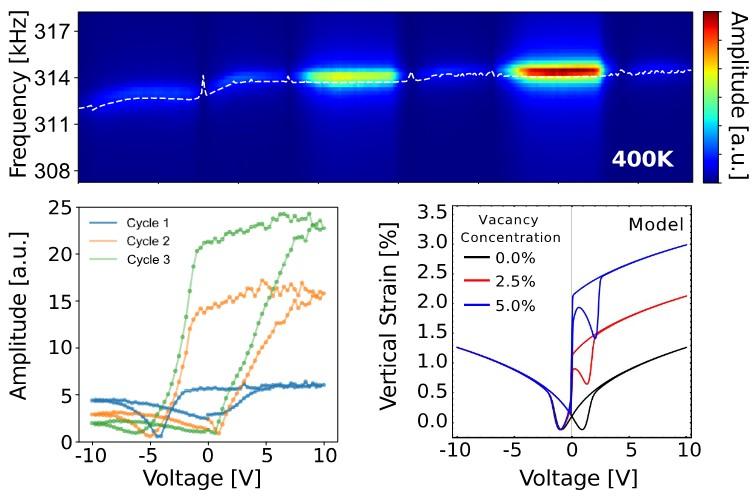
Scientific Achievement
A new mechanism was discovered enabling the electromechanical response in BaTiO3 (BTO) to be enhanced by a factor of 4.8.
Significance and Impact
This mechanism of bias induced oxygen vacancy injection via scanning probe microscopy (SPM) enabled the superior electromechanical response, providing an alternative route toward improving ferroelectrics for actuators and sensing.
Research Details
- Piezoresponse force microscopy performed at elevated temperatures was used to explore the dynamics of oxygen vacancies in BTO.
Density functional theory, reactive force field, and thermodynamic modeling all support a mechanism of vacancy-assisted enhancement of the electromechanical response
K.P. Kelley, et al., Advanced Materials, 2106426 (2021). https://doi.org/10.1002/adma.202106426
Work was performed at the Center for Nanophase Materials Sciences and the National Institute for Computational Sciences at Oak Ridge National Laboratory, the Pennsylvania State University, National Academy of Science Ukraine, and the University of Tennessee







